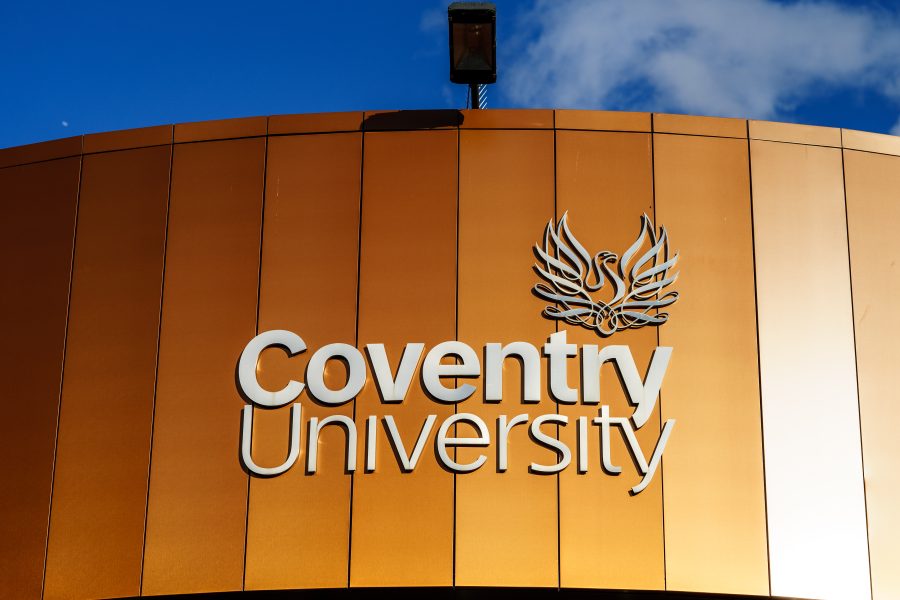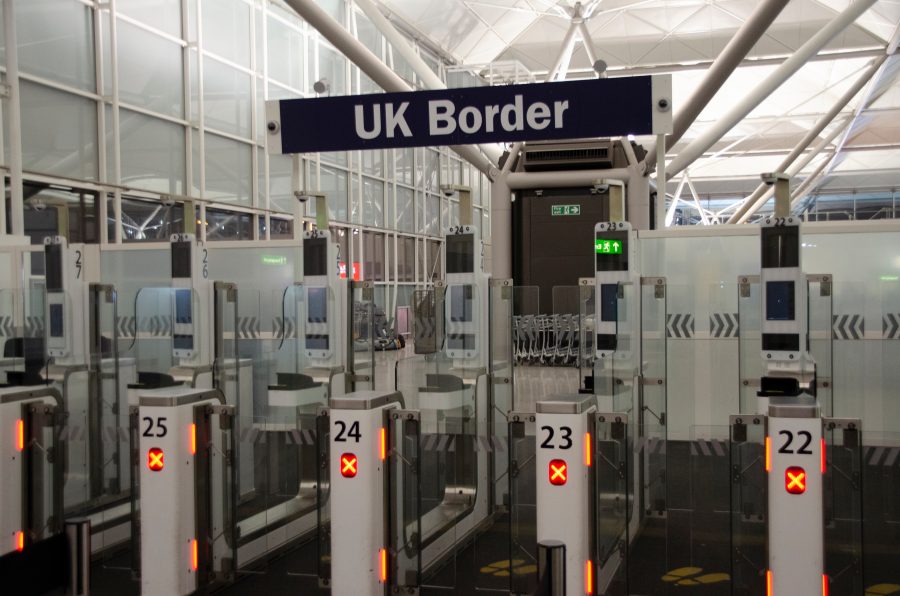The UK higher education sector is already finding it tough, and the contradictory immigration policies of the ruling Conservative Party are putting it under even greater pressure. What can university management teams do about it?
It has been a torrid few weeks for UK higher education institutions, and especially for those involved in international activities. On November 23rd, the Office for National Statistics estimated that net migration in the calendar year of 2022 had reached 745,000, up from its previous figure of 606,000. Its further estimate that this has slowed to (a less widely reported) 672,000 for the 12 months to June 2023 did not bring any comfort. Then on 4th December, the government announced measures aimed at reducing immigration by 300,000. This included a significant increase to the minimum salary level at which skilled workers can obtain a visa. Hardly helpful to HEIs. But it did not, for the timebeing anyway, incorporate any further direct changes to rules relating to visas issued under the study route.
The government had previously legislated to prevent dependants of international students on taught graduate courses from accompanying them to the UK, effective from January 2024. This announcement, in the summer, is widely credited with creating a peak in applications in the Autumn 2023 intake (although conversion outcomes are reported to have been mixed), before the rule change, then causing a major slowdown in projected international enrolments at post-1992 universities for 2024 intakes.
Crossfire hurricane
In December, the Tories have been beset by more factional infighting, the resignation of immigration minister Robert Jenrick (he was replaced by two ministers: with respective briefs for legal and illegal immigration) and heated arguments, led by the prime minister, Rishi Sunak (pictured below), about whether the UK can legally send asylum seekers to be processed in Rwanda. If only the same energy and resources had been dedicated to processing the 175,000-strong backlog of asylum seekers reported by the Home Office in August.

The government’s approach to immigration policy
This hurricane of incompetence on a grand scale, a political party at war with itself, and the inevitable lack of certainty about the real impact of its latest measures, brings us to a situation where the government is actively looking for even more ways to bring down the net migration numbers. 745,000 less 300,000 (if that goal is fulfilled) still leaves at least 445,000 reasons that the government may feel the need to act to reduce immigration faster. In the process of desperately trying to appeal to its own backbenchers in the Houses of Parliament, and to an electorate which the evidence suggests is actually becoming less concerned about the topic, UK higher education is likely to be caught in the crossfire.
Migration Advisory Committee report
Enter the Migration Advisory Committee (MAC) which has just published its annual report, and has also been asked to review the graduate visa route that currently enables international scholars, granted a student visa, to stay in the UK for a further 2 years after completing their degree. This will get university Vice Chancellors, and the wider UK international education industry, even more nervous about the future financial outlook. Many are already at crisis point: Coventry University reported this week that it will make close to £100m of cuts to expenditure over the next two years, after its income is projected to miss budget by £85m in the year to July 2024.

Rising like a phoenix from the flames?
The MAC annual report outlines the arguments that will play out in the coming weeks. The role of the MAC is to advise the government on policy, not to decide it. But the report contains some clear pointers to the debate to come.
- Yes, the government did have an explicit policy to increase international student numbers to 600,000 by 2030, achieving its goal a decade early. With universities losing money on undergraduate domestic students, and with fees frozen at a time of high inflation, international student revenues have helped keep many higher education institutions afloat, as well as being a major export earner for the UK economy as a whole.
- There have been some unintended consequences of this success, with the rise of those on dependant visas, driven by Nigeria and India which accounted for 73% of dependants in 2022. This is a problem for the positive story of inbound student arrivals, as dependants do not pay any fees to universities and also, arguably, place extra demand on housing stock and public services. Hence the dependant restrictions about to be implemented.
- The MAC believes that the concerns it expressed in its 2018 annual report, that ‘a post-study work regime could become a pre-work study regime’ is supported by the latest data. The committee’s view is that the universities are not competing on the quality of their programmes, but have been able to market themselves as a cost-effective way of entering the UK to work. The 2023 annual report states that: ‘the rise in student numbers is almost entirely focused on taught Master’s degrees, and the growth has been fastest in less selective and lower cost universities. The rise in the share of dependants is also consistent with this. Since both the applicant and an adult dependant can work both during the original study period (students can work up to 20 hours per week during term and full-time outside term), and for 2 years on the graduate visa, the cost-benefit of enrolling in a degree has changed substantially.’
- And when such international graduates enter work, many are doing so on very low salaries. A high proportion of them earn less than the current £26,200 minimum (before its increase to £38,700) of the skilled worker route during their first full year after graduation. The report states that ‘the lower quartile of non-EU Master’s students experience minimal wage progression up to 5 years after graduation, suggesting they are more likely to remain in low-skilled jobs post-study.’
These findings do not build a credible case that the graduate visa route is predicated on encouraging the employment of skilled workers who add value to the UK economy. Rather the opposite.
Such opinions make it likely that a future policy recommendation could introduce a threshold minimum salary level to enable qualification for the graduate visa route, a decision that would disproportionately impact the finances of post-1992 universities.
Much of the language used by the Migration Advisory Committee, seems to infer a strong bias towards research-intensive universities and neglects the contribution that modern universities can bring to their local communities, and local employers, for which they need the fee income provided by international students. Indeed, all five committee members are academics in elite Russell Group universities.

Welcoming international students to the UK
The importance of keeping the graduate route intact
The other side of the argument is put forcibly by former universities minister, Jo Johnson in a recent opinion piece in the Financial Times. He writes that ‘any move now to axe or make the graduate route less attractive would risk tipping many universities into deficit, reduce the country’s soft power and hit an export sector that contributes more than £41bn a year to the economy’ and that ‘the post-study work offer is table stakes for the UK’s ability to attract globally mobile students at a time of intense competition from the US, Canada, Australia and other, non-anglophone markets.’
He argues that any review of the graduate route should focus on addressing abuses of the current system, rather than on making fundamental changes to the policy itself. Johnson advocates application fees, higher tuition deposits, and the requirement to deposit the mandatory minimum maintenance funds in an interest-bearing escrow account as three possible ways for the sector to ensure that it gains political backing for the graduate route to continue.
Survival of the fittest
Aside from lobbying the government about the impact on university finances, and adopting such measures that reassure politicians that universities have got their quality control in order, how else can HEIs respond to an overall reduction in demand from international source markets? In early 2024, many will be nursing severe hangovers caused by institutional complacency as international student numbers rose and made everyone look good. Faced with the new realities, an intensive fitness regime for the new year is prescribed.
1. Measure graduate outcomes, leverage industry networks, engage with alumni
Institutions that claim to be focused on the career outcomes of their graduates need to walk the talk. A starting point is to track, and publish data on, the career progression of international alumni. On the back of insights over time, institutions will be able to invest smartly in delivering impactful outcomes through relevant course content, and in making connections to prospective employers. Some universities seem to view the end of a differentiated international student journey as enrolment and the receipt of tuition fees, instead of tailoring their offer to the needs of international students throughout, and beyond, the degree programme.
2. Work with credible recruiters and agents, focusing on commercial performance and compliance
The effectiveness and capabilities of many international recruitment and marketing teams, and the management of their agent networks, is still not good enough compared to what the UK industry needs to compete sustainably with alternative destinations. It is easy to do well in rising markets, now we will see how strong these international teams really are. Identifying, attracting, developing, and retaining commercially-minded team members, and performance managing a network of education agents with sufficient global or regional reach is essential to future success. Alongside this, recruiters must also pay close attention to admissions and compliance processes, ensuring that students entering the institution are legitimate and motivated to complete the course. There should not be any contradiction between the targeting of commercial outcomes and ensuring that stakeholders, including the government and public, have confidence in the enterprise.
3. Managing the pipeline of prospective students to improve efficiency and conversion outcomes, integrating technology solutions to improve enrolment services and speed up response times
Many university admissions processes are still reliant on manual processes, and the reactivity and response times of individual team members. Service levels vary enormously between institutions, and are often unacceptably slow. Financial success in coming years will largely depend on how well operational processes are managed, and innovation through the adoption of new technologies, including artificial intelligence, to improve admission decision-making and the customer experience, in order to gain an edge. Universities should consider collaborating with private sector education and service providers more closely on many aspects of their enrolment process for international students. The universities that become good at this, will win market share in a time of likely turmoil for the sector.
Conclusion
The UK government should pursue policies that keep the financial prosperity of universities, and the UK’s international education sector, at the forefront of their priorities. Nevertheless, universities have a key role to play in reassuring the public and policy makers, that they will not tolerate any abuses in the current visa system.
Quality control measures for the recruitment and admissions process, of the type recommended by Jo Johnson, may well play a part. Also important is a full understanding of graduate outcomes, and a focus on improving them. Enhanced commercial and operational capabilities are essential to the delivery of both a competitive edge and of quality assurance.
Commercial, compliance, academic and student outcomes are closely aligned imperatives. University management teams need to realise this and develop their teams with a long-term plan, and with an investment approach that is fully coherent, and orientated towards international student success, across all parts of the institution. How each university approaches the challenge ahead will determine the sector’s winners and losers in 2024 and beyond.